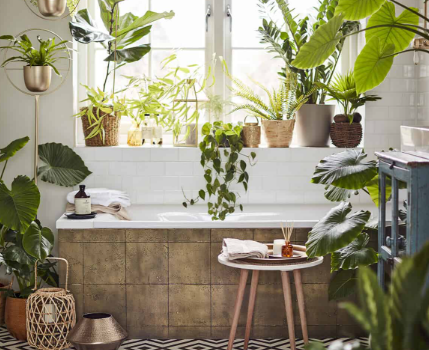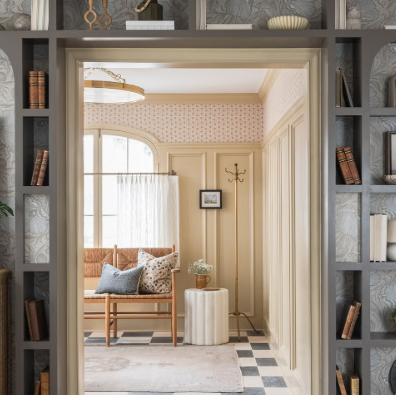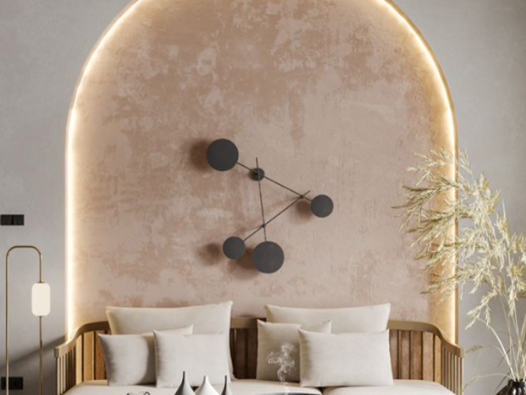
Biophilic interior design is a concept that taps into our intrinsic connection with nature, which has been vital to our well-being for centuries. However, with the rise of urbanization, many of us have become disconnected from the natural world. Biophilic design bridges that gap by integrating natural elements into interior spaces, enhancing both the aesthetics and functionality of the home. It helps create environments that foster health, tranquility, and well-being while embracing modern living.
What is Biophilic Design?
Biophilic design is a creative approach to interior design and architecture that incorporates elements of nature into indoor spaces. It’s more than just adding plants or nature-themed decor. The goal is to design spaces that replicate the essence of the natural world, creating environments that encourage a deeper connection to nature. This can involve using natural light, organic materials, water features, and even elements like plants and natural patterns, all working together to create a holistic, rejuvenating space.
The Basics of Biophilic Interior Design
Biophilic interior design aims to transform indoor environments by mimicking the patterns, materials, and textures found in nature. It’s about designing spaces that feel alive, bringing vitality into the home while improving the physical and mental health of its occupants. The approach focuses on a harmonious balance of colors, textures, and arrangements that evoke a peaceful, natural ambiance while accommodating modern lifestyles.
Key Elements of Biophilic Design
- Natural Light: Maximizing daylight exposure, which improves mood and enhances overall well-being.
- Greenery: Incorporating plants to purify the air and bring a touch of nature indoors.
- Organic Materials: Using natural materials such as wood, bamboo, and stone to create warmth and authenticity.
- Natural Patterns: Adding design elements that reflect nature’s patterns, like waves or spirals.
- Water Features: Integrating calming water elements such as fountains or small indoor waterfalls.
- Views of Nature: Designing spaces to offer a clear view of outdoor natural scenes or incorporating nature-inspired art.
- Natural Textures: Using materials like sisal, jute, or other natural fibers to create tactile experiences in the space.
Why Biophilic Design Matters
Biophilic design is more than a trend; it’s an essential element for enhancing life at home. Here’s why it matters:
- Stress Reduction: The calming influence of nature reduces stress and promotes relaxation.
- Enhanced Creativity: Exposure to nature boosts cognitive function, which can increase creativity and problem-solving.
- Improved Well-being: Nature-inspired spaces support emotional balance and mental clarity.
- Better Air Quality: Plants naturally purify indoor air, creating a healthier living environment.
- Connection to Nature: Biophilic design allows us to reconnect with nature, even in urban settings.
Incorporating Biophilic Design Into Your Home
- Natural Light: Maximize natural light by adding larger windows or skylights. You can also use reflective materials to amplify daylight in darker spaces.
- Organic Materials: Choose wood for furniture, bamboo flooring, or stone for countertops to bring warmth and an organic feel to your home.
- Greenery: Add potted plants or create green walls to bring vibrant color and improve air quality.
- Natural Patterns and Shapes: Select decor with biomorphic patterns, such as those found in waves, spirals, or other natural forms, to infuse the space with calming energy.
- Water Features: Adding a tabletop fountain or a small indoor waterfall can bring the soothing sounds of water into your space, contributing to a serene atmosphere.
- Views and Vistas: Optimize the layout of your space to offer natural views, or incorporate nature-inspired artwork to bring the outside in.
- Natural Textures and Tactile Elements: Use tactile fabrics such as wool throws, jute rugs, or linen cushions to add comfort and texture.
Key Benefits of Biophilic Design
Biophilic interior design brings a variety of benefits, especially for those looking to improve the quality of their home environment:
- Physical and Mental Health: Reduces stress and anxiety while promoting relaxation and well-being.
- Increased Productivity: Biophilic design can enhance focus, creativity, and productivity in workspaces and homes alike.
- Improved Air Quality: Indoor plants help to purify the air, improving the overall environment in your home.
- Creating Harmony: Biophilic design brings a calming atmosphere to your home, making it a peaceful retreat.
The Biophilic Design Trend
The desire to reconnect with nature in the home has driven the rise of biophilic design. This trend merges sustainability with style, incorporating natural elements in a way that enhances both function and aesthetics. Eco-conscious homeowners are particularly drawn to this design philosophy, as it not only supports wellness but also promotes environmental harmony. From adding greenery to using sustainable materials, biophilic design aligns perfectly with today’s values of wellness and sustainability.
Challenges and Future of Biophilic Design
Although biophilic design is a popular and effective choice, there can be challenges in implementing it. Space constraints, budget limitations, and the demands of urban living can make it difficult to fully integrate natural elements into every home. However, there are ways to overcome these obstacles. Even small changes—like installing modular green walls, using foldable glass partitions, or hanging nature-themed artwork—can help bring nature into your space. With creativity and the guidance of interior design experts, biophilic principles can be adapted to fit any space, no matter the size or budget.
Conclusion
Biophilic interior design is more than just a way to decorate—it’s a lifestyle choice that nurtures the body, mind, and soul. By integrating natural light, organic materials, greenery, and water features, you can create spaces that promote well-being and foster a deeper connection to nature. Whether you live in a bustling city or a quiet suburb, biophilic design principles can transform your home into a peaceful, rejuvenating haven that supports both your health and happiness.










